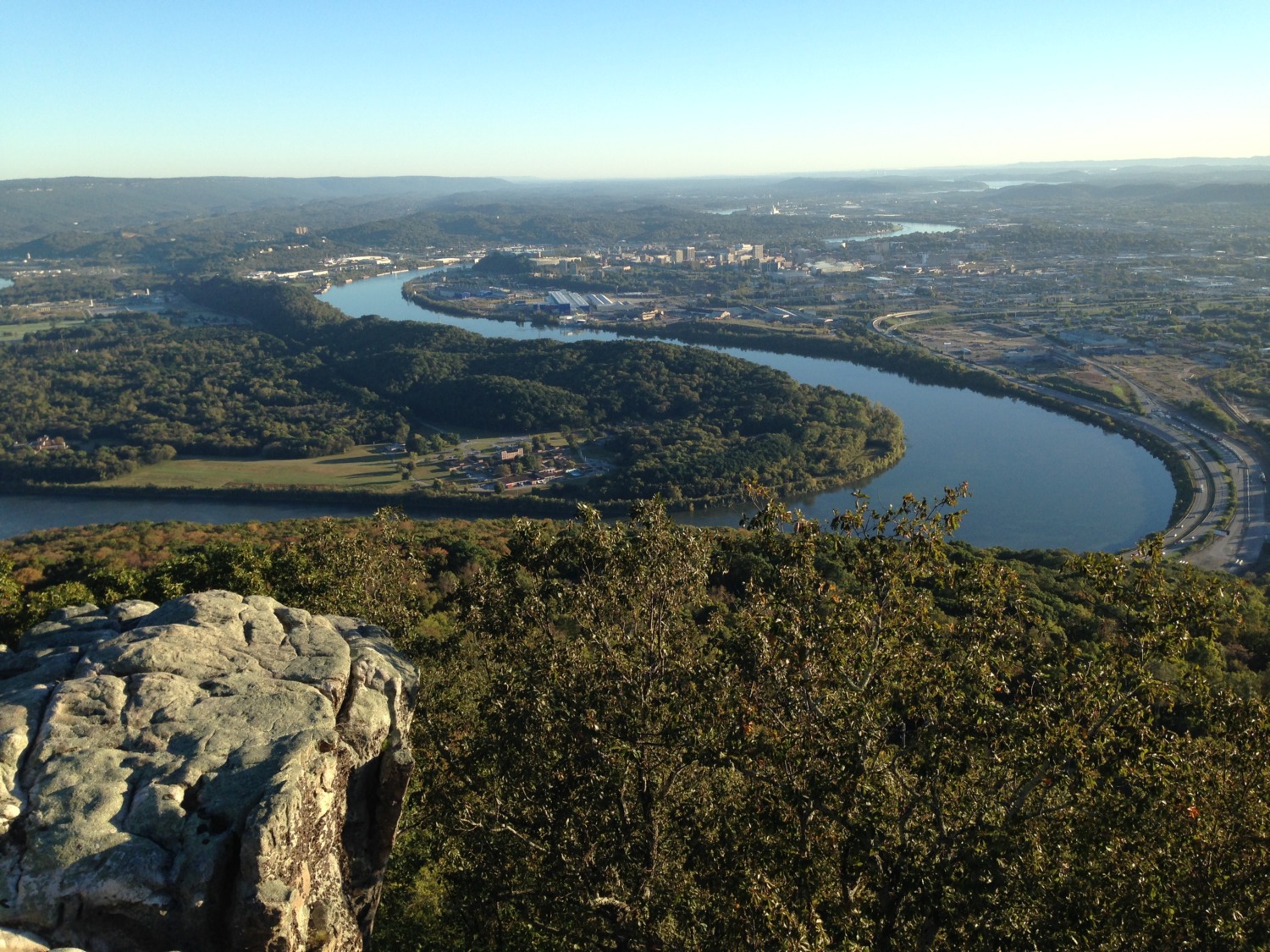
Following their defeat at the Battle of Chickamauga, the Union troops withdrew (ran away) to Chattanooga. Instead of pursuing aggressively, the Confederate troops, under General Braxton Bragg, took some time to regroup, bury the dead, and then mosey on up to the area around Chattanooga. By this time the Union army was firmly entrenched, so Bragg decided to set up a siege of Chattanooga. His troops would surround the city, back the Union up against the Tennessee River and starve them out.
Events didn’t quite work out the way Bragg planned. At first the Union army was starving. Their rations were quickly depleted and, because it was late fall (October) there wasn’t much that they could scavenge. Confederate pickets surrounded Chattanooga pretty effectively, placed on Lookout Mountain, Orchard Knob, Missionary Ridge and strategic places in between.
By the middle of October, Union General Rosecrans was ready to surrender Chattanooga. General Grant, who had just been made commander over all the Union armies, found out about it and replaced Rosecrans with General Thomas, the “Rock of Chickamauga.” giving him orders to hold Chattanooga. Thomas replied, “We will hold it until we starve.”
Grant’s first priority was to open and hold a supply line into Chattanooga. He sent General Hooker with 15,000 men from the Army of the Potomac, to open a supply line from Bridgeport Alabama to Brown’s Ferry Tennessee. From Brown’s Ferry, the Union army could ferry the supplies over the Tennessee River and into Chattanooga. By October 19 the “Cracker Line” – so called because the primary food was hardtack crackers – was open, largely unopposed by the Confederate forces.
Why would the Confederates allow the beseiged Union army to open a supply line into Chattanooga? General Longstreet had troops on Lookout Mountain and could see the army marching into the valley. Longstreet, however, chose to ignore the army and the opened supply line after the first night when he sent a division against the 15,000 men in an night attack (see The Battle of Wahautchie). After the brigade was defeated, Longstreet did not try another attack with more men.
Now a great irony occurred. The Union Army, under “siege” in Chattanooga, was better supplied than the Confederate Army. The Union Army had tents, food, and plenty of ammunition. The Confederate Army had left their tents behind before Chickamauga and were not receiving most of the needed supplies. The Confederates were starving and freezing as the winter weather set in. The Union troops had food and shelter and were comfortable in the November weather.
Was the Union Army content to stay in Chattanooga for the winter? Would the Confederate army attack before all their troops deserted? You will find out in the next installment of Civil War History in a Nutshell.
